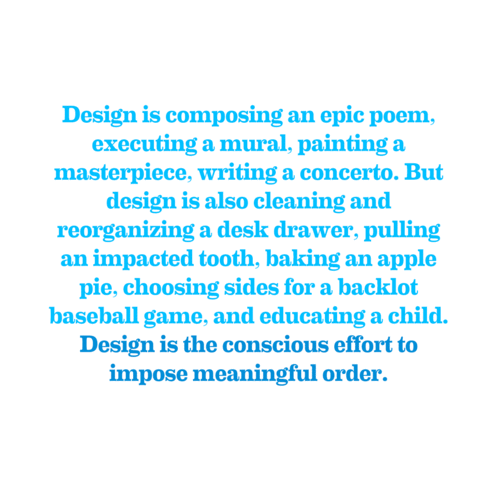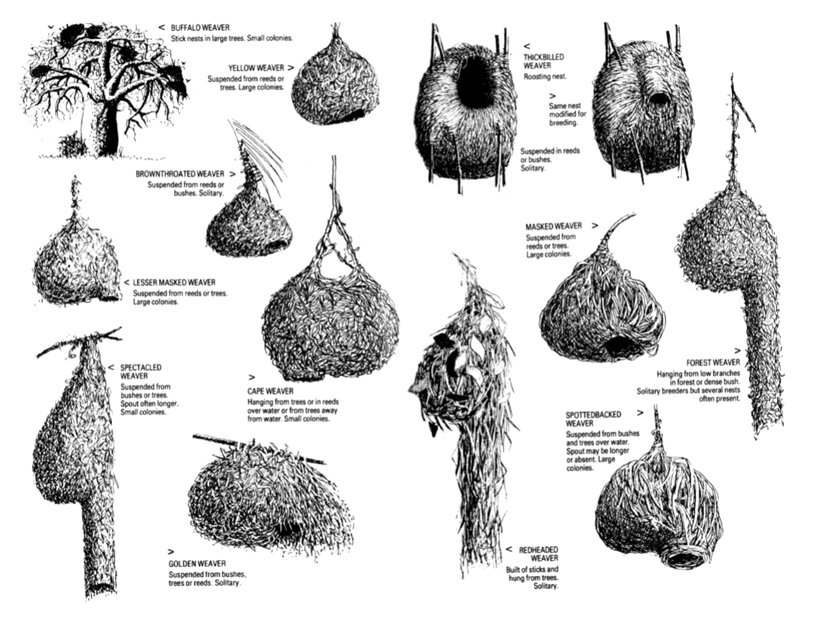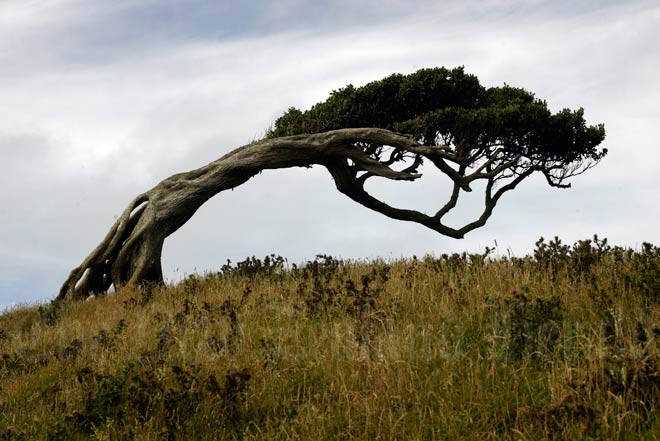Nigel Cross refers to design as ‘solving’ wicked problems, Herbert Simon talks about ‘devising’ courses of action, and Donald Schon suggests ‘reflective’ practice.
What is clear is that when we talk about design as ‘solving’, ‘devising’, and ‘reflecting’, we are thinking of it as a conscious process. There are plenty of examples however where this is not the case and consciousness does not come into it at all.

Innate Architects and Engineers
Taking a broad view of what constitutes a building, I would argue that architectural and engineering design has been around for a long time, as long in fact as the basic needs for shelter or protection have existed. The moment an edifice or shelter is constructed, its creators fit the description of architect, and the moment some thought is put into the science and technology behind the construction, they also fulfil the definition of engineer.
A birds nest is an example. The nest is created to fulfil the function of a home, somewhere for its occupants to take respite, lay eggs and reproduce. Its location is chosen on the basis of a number of factors, proximity to food and security from potential predators are two primary factors ands there will be many more. The materials that it is constructed from have also been chosen in light of specific inherent properties, they are flexible enough to weave together yet strong enough to maintain support. Its constructed detail and form enable it to sit upon and attach to the supporting tree structure, be comfortable for its occupants, and also be strong and flexible enough to weather movements caused by wind and other external forces.
The act of building a nest requires conscious thought, attention is applied in the placement and weaving together of sticks etc. The blue prints for the nest however, the plans or design, I would suggest come from a deeper innate and non-conscious level of thought or knowledge. They exist in aviary minds having been honed through generations of trial and error, refinement and improvement. The final form reflects a long process of incremental change to achieve better end outcomes. Conscious or non-conscious, this process is on of design.

Design Powered by Nature.
The world of trees and plants extends this proposition of non-conscious design further. It is hard to argue against the optimised efficiency of a tree. Trees respond to the environment around them, adding adding or subtracting material on the basis of where it is needed the most. It may be for structural reasons such as resisting wind or coping with gravity loads, or for other functional requirements such as delivering nutrients …or in all likelihood both.
Thought (conscious or non conscious), it seems, doesn’t come into this process at all, at least in our current definitions of what constitutes thought. If there is an architect or engineer at work it is nature and evolution.
It is difficult to exclude birds nests and trees from the definition of design. They have been created and shaped to specific purposes. Their form, make up and materials all respond to particular needs that they have been demanded to satisfy. It is the ultimate realisation of form following function.
If design then includes non-conscious thought processes, and even no-thought-at-all processes, where does that leave us, as conscious thinkers, in the equation?
At one level of design we are merely imitators. We reproduce natural processes consciously. We manipulate form through trial and error until it meets the functional requirements around it.
The ‘function’ in the ‘form follows function’ argument however transcends the requirements of our physical environments. As creatures with consciousness we create our own virtual environments or worlds that we live within, reality being after all an illusion as much of philosophy and religion would tell us. This is extra that we bring to design then, the esoteric abstractions that nature does not understand, abstractions fashioned to stimulate our minds producing feelings of comfort, or inspiration, or even manipulation and control. Form following emotion.
The Inventions of Nature and the Nature of Invention.
Leonardo daVinci recognised this transcendence when he referred to design as ‘Divine’:
Design [Designo] is of such excellence that it not only studies the works of nature but it is more infinite than those made by nature… and on account of this, we conclude that it is not only a science but a divine power to be accorded a worthy title. (CU,f.50r)
It surpasses nature because the basic forms of nature are finite and the works that the eye demands of the hands are infinite. (CU.f.116r).
At the same time Leonardo recognised the transcendence of human design above that of nature, he in no way diminished the importance of natural design. He studied nature and the human body in particular in great depth, borrowing what he found in proportion and other things, and applying them to his own inventions, including those of architecture.
The renaissance was known for its great artist-engineers such as daVinci, and Brunelleschi, designers who understood the importance of understanding and incorporating natural principles into design. The modern day design parallel is that of architects and engineers, good design comes from incorporating and balancing both.

Images:
1) Quotation: Victor Paponek,
2) & Post cover image: https://www.designboom.com/weblog/images/images_2/andrea/design_indaba
3) Wind Blown Tree:Rhys Richards, ‘Chatham Islands – Overview’, Te Ara – the Encyclopedia of New Zealand, http://www.TeAra.govt.nz/en/photograph/37780/wind-blown-akeake (accessed 2 December 2018)
References:
1) Cross, N.G. (ed.) (1984) Developments in Design Methodology, Wiley, Chichester.
2) Simon, H. A. (1996). The Sciences of the Artificail. Cambridge, MA: MIT Press.
3) Schon, D. (1983). The reflective practitioner: how professionals think in action. New York: Basic Books.
4) Galluzzi, P. (1987). Leonardo Da Vinci Engineer and Architect. In T. M. M. o. F. Arts (Ed.): The Montreal Museum of Fine Arts.
After further reading and debate on this topic it seems that semantics plays a large part. The current popularist understanding of design involves it seems conscious thought, it is a process of the mind. Natural design is probably better termed evolution. I am not fully comfortable with these delineations however as they don’t deal well with the random nature of one of the engines behind design, creativity.
Chance forms a large part of the creative process. X-rays and sunscreen are both examples of outcomes that came through pure chance findings when looking for other things. What was important was the recognition of the applicability of the outcomes when they by chance (rather than logic or planning), appeared.
In the human world perhaps one form of design is the recognising of these chance outcomes, just as in the natural world, evolution relies on a similar process of survival to to do the recognising. I have decided that design maybe should be defined as a conscious purposeful process, and evolution as a natural equivalent.
In any case as the end outcomes deal with the physics of the real world, and the social constructs of the the species that live within it, both engineering and architecture are present no matter where they came from…